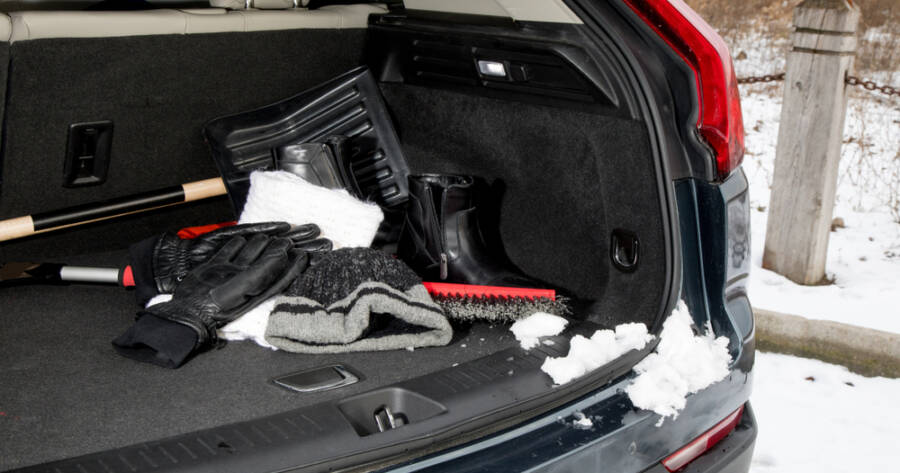Winter weather can be tough on your vehicle, especially if you don’t have a garage to shield it from snow, ice, and freezing temperatures. While it may feel overwhelming to keep your car safe and reliable outdoors, a few smart steps will make all the difference. From protecting your paint to keeping your engine in peak condition, winter preparation is all about prevention. It’s time to get your vehicle ready to face the cold!
Protect Your Battery
Cold temperatures reduce battery performance significantly. If your car is parked outside, the strain is even greater. Test your battery before winter hits and replace it if it’s weak. Investing in a portable battery jump starter or jumper cables is also smart. For added protection, consider a battery blanket, which keeps the battery warm overnight and helps prevent early-morning no-start situations.
Use the Right Engine Oil
Engine oil thickens in the cold, making it harder for your vehicle to start. Check your owner’s manual for winter-grade oil recommendations—often a lower-viscosity oil is suggested for cold climates. Fresh oil ensures better lubrication, which reduces wear and tear during chilly startups. If you don’t have a garage, oil choice becomes even more important since your vehicle is fully exposed.
Top Off and Protect Fluids
Low temperatures affect all of your car’s fluids. Make sure your antifreeze (coolant) is filled to the proper level and mixed correctly (usually 50/50 with water). Check windshield washer fluid as well—choose a winter formula that won’t freeze in the reservoir or on your windshield. Power steering, brake, and transmission fluids should also be inspected. A vehicle left outdoors will face more rapid temperature changes, so fluid health is key.
Care for Your Tires
Tire performance drops as temperatures fall. Switch to winter tires if you live in an area with frequent snow or ice; they grip much better than all-season tires in freezing conditions. If that’s not an option, at least ensure your current tires have adequate tread. Keep a portable tire inflator handy—air pressure drops in cold weather, and you’ll need to top them off more often. For added traction, keep a set of tire chains or traction mats in your trunk.
Shield Your Vehicle’s Exterior
Without garage protection, your car’s paint and glass take the full brunt of winter. Start by applying a high-quality wax before the first snow—this adds a protective layer against road salt and grime. Use a windshield cover to prevent ice buildup and reduce scraping in the morning. If you expect heavy snow, consider a full car cover designed for winter use. It won’t replace a garage, but it adds a much-needed barrier between your vehicle and the elements.
Keep Wipers Winter-Ready
Regular wiper blades can freeze, crack, or lose effectiveness in cold conditions. Swap them out for winter wiper blades, which are made to resist freezing. Always keep extra washer fluid in your trunk. Parking outside means your windshield will face frost and ice almost daily, so reliable wipers are crucial for visibility and safety.
Maintain the Undercarriage
Road salt and slush can lead to rust and corrosion, especially when your car isn’t stored in a garage. Schedule an undercarriage wash before and during winter to rinse away salt. Some drivers choose to apply a rustproofing treatment, which adds long-term protection. Parking on the street or driveway makes this extra valuable since exposure is constant.
Stock a Winter Emergency Kit
If you drive in winter without a garage, you’ll want to be extra prepared. Pack an emergency kit with blankets, gloves, a flashlight, non-perishable snacks, a small shovel, and sand or kitty litter for traction. If your car won’t start or gets stuck, you’ll have what you need until help arrives. Include a scraper and snow brush so you can clear your car quickly every morning.
Fuel and Heating Considerations
Never let your gas tank drop too low in the winter. Condensation can build up inside the tank and freeze in the fuel lines. Keeping the tank at least half full helps prevent this. Test your heater and defroster before the cold sets in to ensure they’re working properly. Since your car sits outside, you’ll rely on them even more to keep the cabin comfortable and windows clear.
Time To Prepare!
Winterizing your vehicle is essential for safety and reliability, but it’s especially critical if you don’t have the luxury of a garage. By focusing on battery health, fluids, tires, exterior protection, and smart parking habits, you’ll reduce the risk of breakdowns and extend your vehicle’s life. A little preparation goes a long way—so when the temperatures drop, you can be confident your car is ready to handle whatever winter throws its way.

